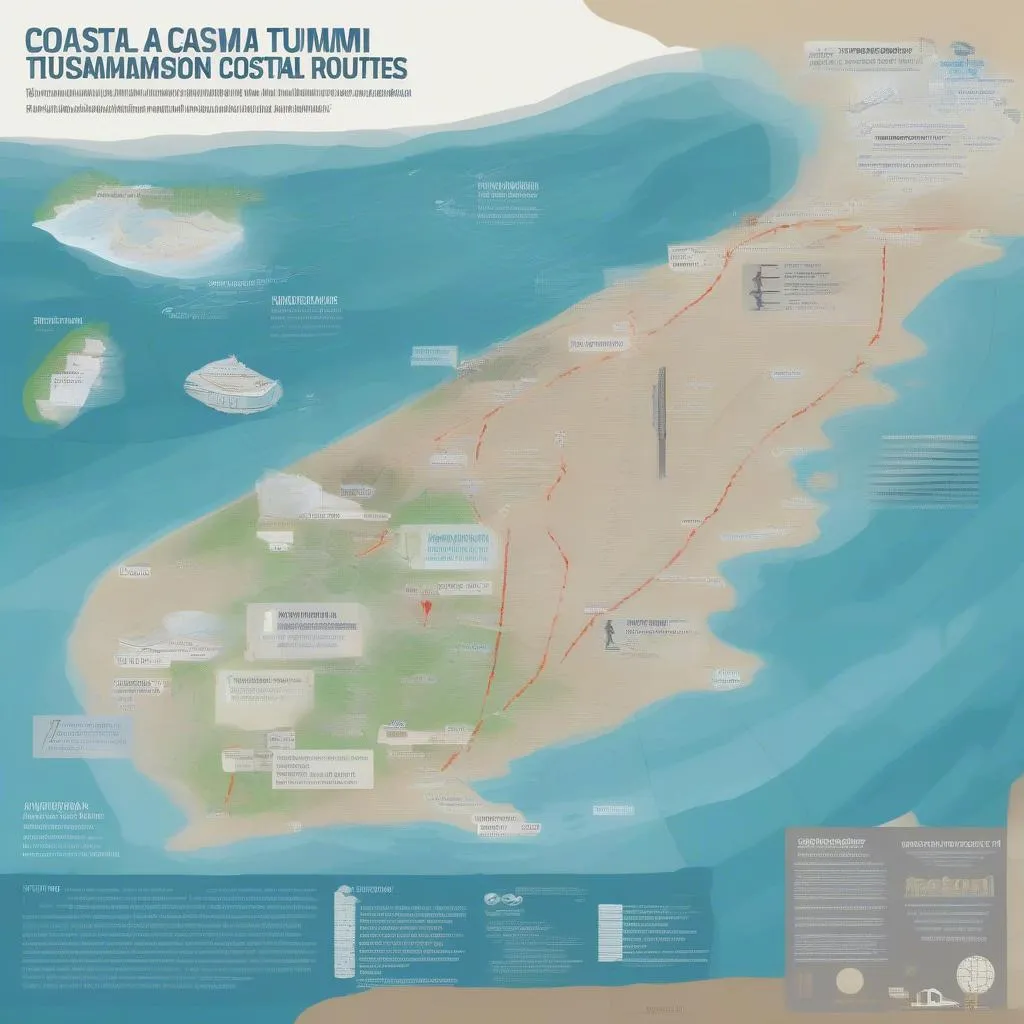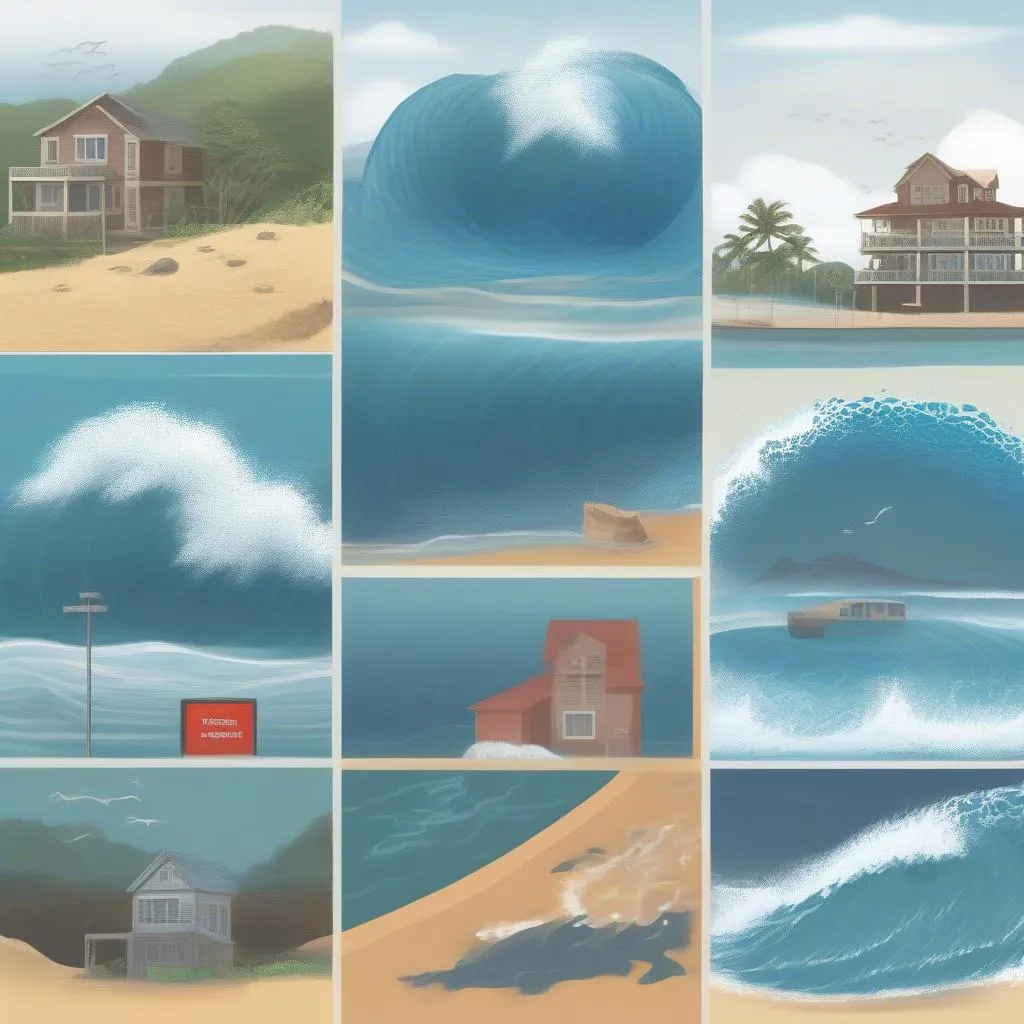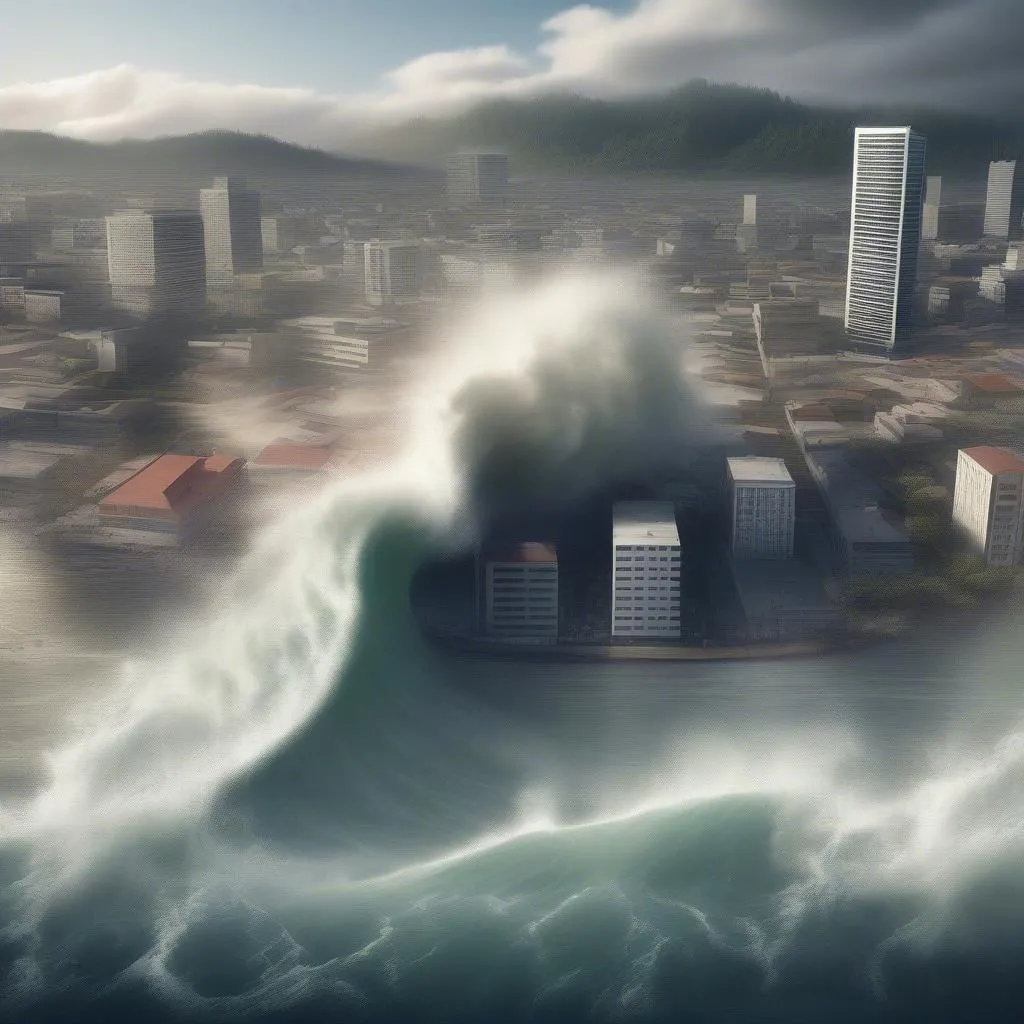Have you ever stood on a beach, mesmerized by the vastness of the ocean and wondered about the power it holds? The ocean gives and takes life, and one of its most awe-inspiring yet terrifying displays of power is a tsunami. These monstrous waves, often triggered by earthquakes or underwater volcanic eruptions, can travel thousands of miles across open ocean and unleash their full force on unsuspecting coastlines. But the question that often lingers is: how far inland does a tsunami travel? How far from the shore does one need to be to escape the devastating reach of these waves?
Tsunami Inundation: More Than Just a Wall of Water
The answer, as with many natural phenomena, is: it depends. Several factors influence a tsunami’s inland reach, or tsunami inundation, as it’s scientifically known.
- Wave Height: The taller the wave, the further inland it can travel. Tsunami waves can rise to several feet, and in extreme cases, even tens of feet, resembling a sudden, dramatic surge in tide.
- Topography: A gently sloping coastline will allow a tsunami to penetrate much further inland compared to a steep cliff face. Imagine a wave hitting the flat expanse of a beach versus crashing against the rocky cliffs of Big Sur in California. The difference in inland reach would be significant.
- Urban Development: Man-made structures can act as barriers, but also channels, for tsunami waters. Densely built-up areas might initially slow down the water’s progress, but also funnel it into narrow streets, increasing its velocity and destructive power.
Devastating Examples and Lessons Learned
History is tragically rife with examples of devastating tsunamis. The 2004 Indian Ocean tsunami, triggered by a massive earthquake off the coast of Sumatra, Indonesia, tragically claimed over 230,000 lives. In some places like Banda Aceh, Indonesia, the waves traveled as far as 3 miles inland.
The 2011 Tohoku earthquake and tsunami that struck Japan provide another sobering example. While the country’s advanced seawalls did mitigate some damage, the waves, reaching heights of up to 133 feet, still penetrated up to 6 miles inland in some areas, highlighting the sheer, raw power of nature.
 Evacuation Route from Tsunami
Evacuation Route from Tsunami
Planning for Safety: Knowledge is Power
While these events are terrifying reminders of the destructive potential of tsunamis, they also underscore the importance of awareness and preparedness. Understanding the factors that influence tsunami inundation, familiarizing yourself with evacuation routes, and heeding official warnings can make all the difference in the face of such natural disasters.
Dr. Emily Carter, a renowned geophysicist and author of “The Fury of the Waves: Understanding Tsunamis”, emphasizes the importance of knowing the warning signs. “A rapidly receding shoreline, an unusually loud roar from the ocean, these are nature’s warnings, and we should not ignore them,” she cautions.
Traveling Safely in a Tsunami-Prone World
For those who live in or plan to visit coastal areas, particularly those in regions with a history of seismic activity, being aware of the risks and taking appropriate precautions is crucial:
- Research Your Destination: Before you travel, check if your destination is in a tsunami-prone zone. Resources like the National Oceanic and Atmospheric Administration (NOAA) website offer valuable information.
- Locate Evacuation Routes: Upon arriving at your hotel or accommodation, familiarize yourself with the tsunami evacuation routes and assembly points.
- Heed Warnings: Pay attention to local news and weather reports. If a tsunami warning is issued, immediately evacuate to higher ground, following the designated evacuation routes.
 Recognizing Tsunami Warning Signs
Recognizing Tsunami Warning Signs
Remember, while the ocean’s power is immense, so too is our ability to prepare and protect ourselves. By understanding the risks and taking appropriate precautions, we can ensure that our travels remain safe and enjoyable.
For further information on staying safe during natural disasters, visit [link to a relevant article on travelcar.edu.vn, using the anchor text “how far can a tsunami travel inland”].
Frequently Asked Questions
- What should I do if I feel an earthquake at the coast? If you feel an earthquake at the coast, it could be a sign of a potential tsunami. Move immediately to higher ground or inland, away from the coastline.
- How will I know if a tsunami is coming? Tsunami warning systems are in place in many coastal areas. Sirens, text alerts, and emergency broadcasts are commonly used to alert the public. However, sometimes the first warning sign might be the earthquake itself, or an unusual receding of the shoreline.
- How fast does a tsunami travel? Tsunami speed varies depending on the depth of the water. In deep ocean, they can travel at speeds of up to 500 mph, slowing down as they approach shallower coastal waters.
Exploring the World, Safely and Responsibly
At travelcar.edu.vn, we believe that knowledge empowers travelers. By understanding the forces of nature and taking appropriate precautions, we can explore the world around us safely and responsibly. Remember, the journey is just as important as the destination, and safety should always be our top priority.
To discover more travel tips and in-depth guides to destinations around the world, explore our website, [link to TRAVELCAR.edu.vn homepage, using the anchor text “TRAVELCAR.edu.vn”].


